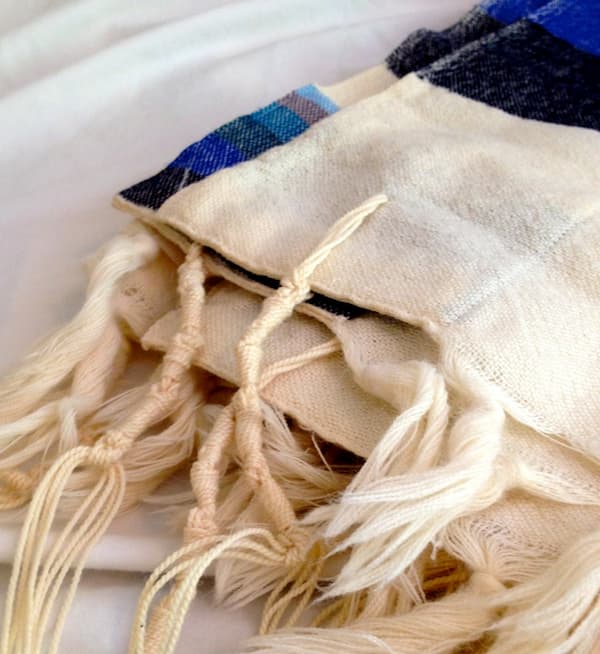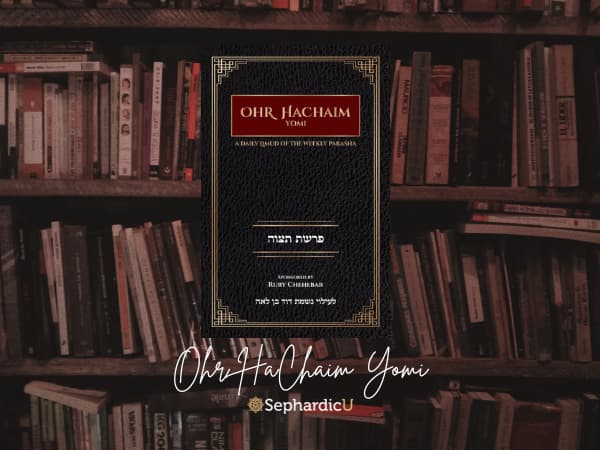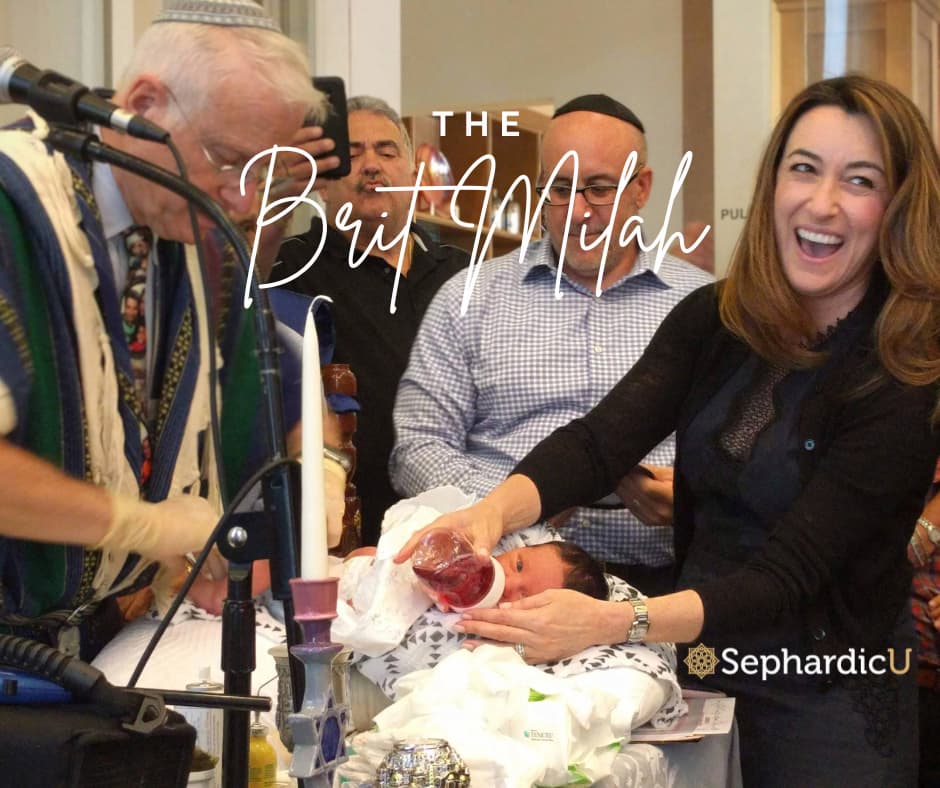Why do we wear Tzitzit?
וְהָיָ֣ה לָכֶם֘ לְצִיצִת֒ וּרְאִיתֶ֣ם אֹת֗וֹ וּזְכַרְתֶּם֙ אֶת־כָּל־מִצְוֹ֣ת יְיָ וַעֲשִׂיתֶ֖ם אֹתָ֑ם וְלֹֽא־תָת֜וּרוּ אַחֲרֵ֤י לְבַבְכֶם֙ וְאַחֲרֵ֣י עֵֽינֵיכֶ֔ם אֲשֶׁר־אַתֶּ֥ם זֹנִ֖ים אַחֲרֵיהֶֽם
It shall be for you a fringe, and when you see it, you shall remember all the of God’s Mitzvot and you will perform them, and you will not detour, led by your heart and eyes which cause you to deviate.
The Talmud (Berakhot 12:2), explains that upon seeing the Tzitzit, one retracts thoughts of three forbidden acts:
אחרי לבבכם – זו מינות… אחרי עיניכם – זה הרהור עבירה… אתם זונים – זה הרהור עבודה זרה
Your heart – that is heresy… your eyes – that is promiscuity… deviate – these are thoughts of idolatry…
This is not a halakhic statement but rather a commentary representing the opinion of the author, Rav Yehudah bar Haviva. The obvious difficulty is that he breaks the rationale for the commandment into three parts, without any support in the original text, and that heresy and idolatry are one and the same. However, future generations have dwelt on the idea of Tzitzit as protection against forbidden sexual acts, probably because of the fantastic story in the Talmud (Menahot 44:1) about a promiscuous man whose Tzitzit saved him from one such act.
Commentators have struggled with the concept of Tzitzit, as there is no immediate and clear relation between the wearing of the Tzitzit and the remembrance of the Mitzvot.
R Moshe Al-Sheikh (1507-1593) compares the Tzitzit to tying a knot in the handkerchief to remind yourself something, only at the time the practice was to tie a thread around one’s finger:
משל אל מה שדרך אנשים, שלזכור דבר מאשר ירצו לעשות, קושרים חוט באחת מאצבעותיו לראות ולזכור בל ישכח ממנו
But he continues to say that the practice is useless if one tied the thread without focusing on what he had to remember, and he notes that this is the problem with the Tzitzit. People wear it as a ritual, and they do not focus on the message of the Tzitzit and what it is supposed to remind them. Is it possible that we are missing an essential idea of the Tzitzit?
In the Midrash on the Parasha, R Meir suggests that by wearing Tzitzit one merits an interview with the Divine Providence:
כל המקיים מצות ציצית… כאילו הקביל פני השכינה, תכלת דומה לים, וים דומה לרקיע, ורקיע דומה לכסא הכבוד
One who fulfils the mitzvah of Tzitzit, it is as if he has welcomed the Shekhina, because the blue fringe resembles the ocean, the ocean resembles the firmament, and the firmament resembles the Divine Throne.
R Meir’s words should not be taken literally. The ocean and the sky are colorless, and the Divine Throne is an abstract concept, without any physical attributes. In my opinion, R Meir offers a meditative process which allows humans to contemplate God’s greatness. It is hard for us to comprehend the vastness of the universe, and even more so, that of its Creator. R Meir says that upon seeing the blue fringe, one thinks of the ocean, which has been, and still remains, a formidable challenge to mankind. Even today, our most advanced and titanic contraptions are dwarfed by the magnitude of the oceans, and we have not begun to scratch the tip of the proverbial iceberg in studying the mysteries of the ocean. That first step sets the stage for the next one, which is the comparison to the sky. The sky, meaning the universe, is greater than the ocean as the ocean is greater than a human being (of course it is much greater than that, but that perspective is sufficient for the mental exercise). The next step is thinking of the creator, which is greater than the universe by the same scale.
This would be a wonderful process, and there is no doubt that observing the marvels of nature is at the core of the spiritual experience, but this process is not clearly conveyed by the biblical text. Furthermore, we must assume that before R Meir offered this meditative technique there was an immediate message was associated with the Tzitzit, and which confirmed one’s faith.
Tzitzit in the ancient Near East
The riddle of the Tzitzit always intrigued me, until several years ago I came upon a book by Prof. M. Inbar, dealing with Prophecies in the Mari Documents, in which the author describes the spiritual world of Mari, which thrived on the banks of the Euphrates in the 18th century BCE. The information was found on clay tablets found at the Tel-Hariri site, and one detail caught my eye. It was the concept of prophecy and its verification. It turns out that the Mari culture was blessed with no less than four categories of prophets, one of which, called Barru, was in charge of confirming the validity of the others. What evidence was brought to the forensic lab of those “Prophecy Verifiers”? You have guessed correctly: the Tzitzit. Writes Prof. Inbar (p. 47-48):
The divine polygraph, used to ascertain the intention of the gods, could tell whether the prophet is telling the truth and was he indeed a messenger of the gods. The examination was performed by holding a fringe from the prophet’s garments or a lock from his hair (or from one who listened to the prophet). Those objects were sent to the Barru, who would perform ritual divinations. They believed that the objects represent their owners, and the results of the divination would determine the veracity of the prophecy.
In one case, a local governor submits the items to the king and writes:
I have sent to my master a lock from the prophet’s hair and a fringe from his garment, let my master decide whether he is a true prophet.
This concept of the examination of prophecy in the Ancient Near East sheds light, in my opinion, on the Mitzvah of Tzitzit. Wearing fringed garments by the whole nation shows their firm belief in Moses’s prophecy, and as a result, in the totality of the Torah and the Mitzvot. This is because the whole nation was present at Mount Sinai, and has witnessed the prophecy of Moses, as it is written (Ex. 19:9): “the people will hear as I speak with you, and they will have faith in you for eternity”. The presence of the whole nation in the prophetic event makes all of them, according to the yardstick of the ancient culture, subject of the examination of prophecy. By wearing garments with four visible corners carrying fringes, they declare their faith in the prophecy, as if saying “here are my fringes, come and take whatever you want”. One who wears Tzitzit declares he has such confidence in the prophecy, as well as in the prophet who delivered it, and therefore he is not afraid that one will cut the corner of his garment and will examine it to verify the prophecy. By contrast, one who casts doubt on the prophecy will try to hide the corners of the garment to avoid examination.
The coat – dress-code for prophets
Coats and robes appear in the Bible as prophets’ clothes of choice. It is said of Samuel that his mother would make for him small coat every year (I Sam. 2:19). When his spirit was summoned by King Saul, he was described as wearing a coat (Ibid. 28:14). It is said of Elijah that his robe had special qualities, and that he bequeathed it to Elisha as part of delegating his prophetic authorities to him (I Kings 19:13-19). It is most interesting to look at the way the prophet Zachariah (13:4) refers to false prophets:
…on that day, the prophets will be ashamed of their visions and prophecies; no more will they wear a woolen robe to mislead the people.
Another allusion to the practices of the false prophets can be found in the book of Jeremiah (9:24-10:11). The prophet addresses the Israelites and their pagan neighbors, saying:
…as one they will be exposed as fools and ignoramuses… they wear blue fringes and royal purple made by wise men.
Jeremiah says that pagans do possess wisdom, but their prophecy is fake, and they disguise their deceit with the external elements of blue dye and royal purple.
Cutting the corner of the garment
Following the war against Amalek, the prophet Samuel confronts King Saul and tells him that God has rejected him as a king. When the prophet turns to leave, the distraught king grabs the corner of his garment and tears it. It is much more than an attempt to hold the prophet back! It is an act which represents a doubt the king casts on Samuel’s prophecy. Saul’s act is harshly rebuked by Samuel. First, he compares the tearing of his garment to the tearing of the kingdom from Saul. He then states that the status of his prophecy has not changed: “the Eternal God of Israel will not deceive and will not regret”. Samuel had to say it because Saul doubted his prophecy. There are other cases in the books of Samuel and Kings where this idea is present.
The Ultimate Tzitzit
In Midrashic literature the term “an all-blue tzitzit” is a sarcastic description of one who thinks he is perfect, but we do find in the Torah an all-blue robe – the coat of the high priest, described thus:
ועשית את מעיל האפוד כליל תכלת. והיה פי ראשו בתוכו, שפה יהיה לפיו סביב כמעשה אורג, כפי תחרא יהיה לו לא יִקָרֵעַ. ועשית על שוליו רמוני תכלת וארגמן ותולעת שני על שוליו סביב, ופעמוני זהב בתוכם סביב. פעמון זהב ורימון, פעמון זהב ורימון, על שולי המעיל סביב. והיה על אהרן לשרת ונשמע קולו בבואו אל הקודש לפני ה’ ובצאתו ולא ימות
Make the coat of the Ephod all-blue. The opening at the top [lit. mouth of its head] will be inside it. There will be a woven seam around it, like embroidery, it will not be torn. Make on its fringes pomegranates of blue, royal purple, and crimson… and golden bells in them around. One golden bell and one pomegranate… on the fringes of the coat around. It will be on Aaron when he serves, and his voice will be heard when he comes to the inner sanctuary [to be] in front of God, and when he comes out, so he will not die.
The coat is an enhanced version of the tzitzit, as demonstrated by this chart:
| Tzitzit | Coat |
| One blue fringe. | The whole garment is blue |
| Fringes are threads of wool. | A complex pattern of golden bells and pomegranates, which are woven from blue, royal purple, and crimson wool. |
| Remembrance through sight: “you will see and remember”. | Remembrance through sound: “his voice will be heard”. Sound can be heard even without being present, and to a greater distance (e.g. foghorn). As Aaron is about to enter the sanctuary, he is reminded of the special situation in which he finds himself, and he is encouraged to act accordingly. |
| A challenge to tear. | A statement: it will never be torn (explained below). |
The intrinsic connection between the coat and the tzitzit was probably clear to Maimonides, since he describes the coat of the high priest as similar to the small tzitzit worn by some under their garments (Laws of the Temple Vessels, 9:3):
המעיל כולו תכלת, וחוטיו כפולין שנים עשר ופיו ארוג בתחילת אריגתו, ואין לו בית יד אלא נחלק לשתי כנפים מסוף הגרון עד למטה כדרך כל המעילים ואינו מחובר אלא כנגד כל הגרון בלבד, והקורע פי המעיל לוקה שנאמר לא יקרע
The coat is all blue. Its threads are folded 12 times, and its opening is woven from the garment itself. It has no sleeves but rather is split into two wings from the neck down…
There is no biblical or Talmudic source to support Maimonides’ description of as a small Tzitzit, and the Raavad challenges him succinctly: “where did he get this from?”
Indeed, Maimonides’ commentators struggle to understand his words or find the source. Most of them refer to the commentary of Nahmanides on the Torah and suggest that there might have been a Talmudic source which was lost. However, according to what I have presented here, there is a close relationship between the coat and the tzitzit, and therefore Maimonides, maybe intuitively, described the coat as a garment with four corners.
It shall not be torn
The final argument to prove this point is in the words of the Torah “it shall not be torn”. One opinion in the Talmud is that tearing the coat is a punishable act (Yoma 72:2), but this opinion is challenged with the argument that linguistically it is a word of advice: “it is good to weave it in that manner wo it will not be torn”. Maimonides, however, rules that it is punishable. That is because just as the fringes of a regular tzitzit are a declaration of faith, so is the whole coat of the High Priest, and anyone who tears it shows his disregard for the divine prophecy.
This is beautifully expressed by two words chosen to describe the coat – mouth and lip:
והיה פי ראשו בתוכו, שפה יהיה לפיו סביב כמעשה אורג, כפי תחרא יהיה לו לא יִקָרֵעַ
…its mouth will be integral, its mouth will have a lip around it, it will be like a mouth of embroidery, it will not be torn.
Those two words are immediately associated with prophecy, especially that of Moses (Ex. 4:11-16; 6:12):
כי כבד פה וכבד לשון אנכי… מי שם פה לאדם… ואנכי אהיה עם פיך… ושמת את הדברים בפיו ואנכי אהיה עם פיך ועם פיהו… הוא יהיה לך לפה… ואיך ישמעני פרעה ואני ערל שפתיים
I am heavy of mouth… who has given man a mouth… I will be with your mouth… you will put the words in his mouth, and I will be with your mouth and his mouth… he will be your mouth… how will Pharaoh listen to me when I am heavy of lips?
In conclusion, the Tzitzit, in its original cultural context, served as a powerful statement of belief and trust in the divine origin of Moses’ prophecy, and consequently, in the validity of the whole Torah. Though these constructs are not part of our social or religious system today, we could still identify with them in the sense of one who “wears his religion on his sleeve” and be proud of our rich and inspiring heritage.
Shabbat shalom
Rabbi Haim Ovadia








Ohr HaChaim Yomi – Emor